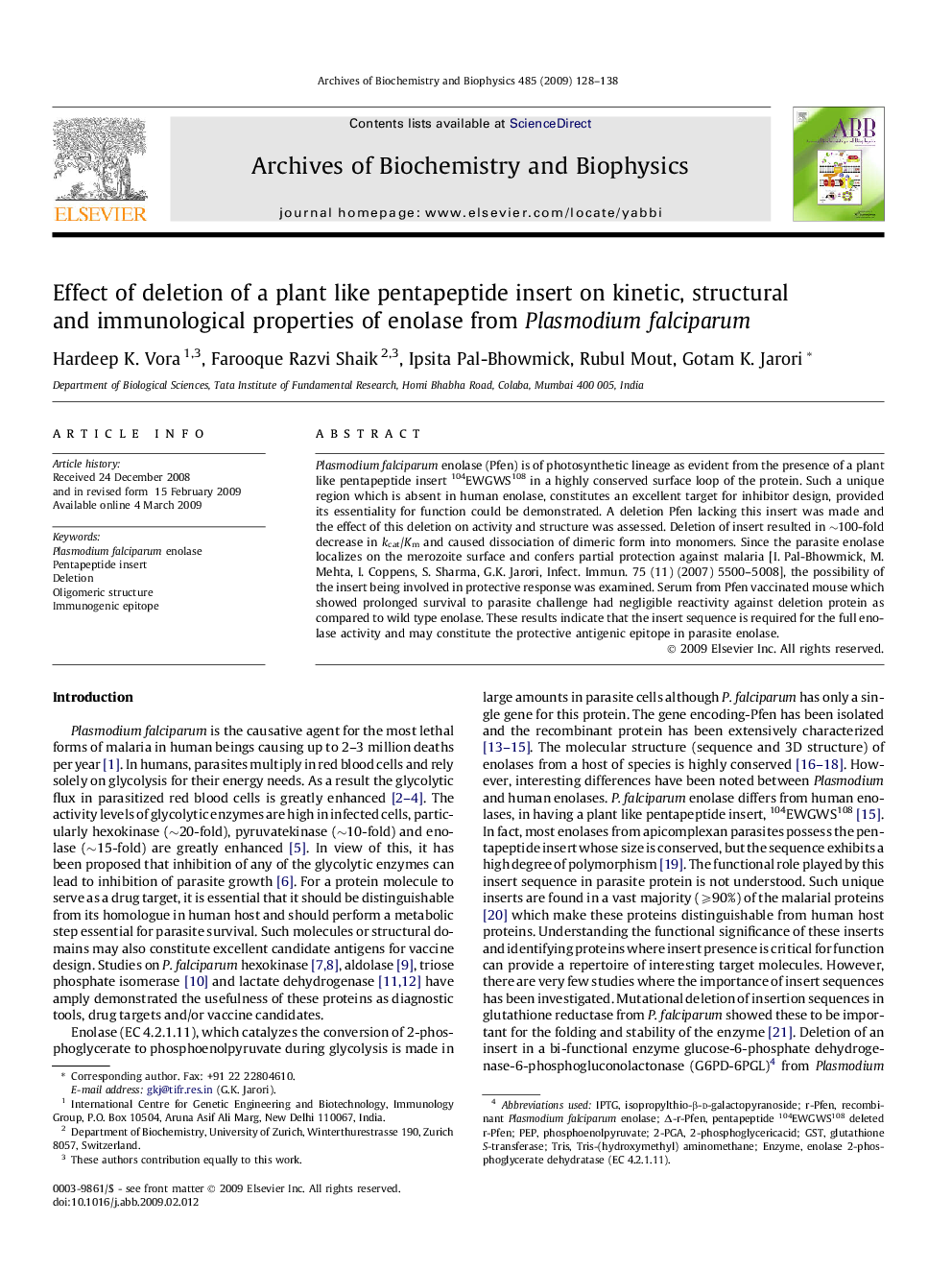| Article ID | Journal | Published Year | Pages | File Type |
|---|---|---|---|---|
| 1926491 | Archives of Biochemistry and Biophysics | 2009 | 11 Pages |
Plasmodium falciparum enolase (Pfen) is of photosynthetic lineage as evident from the presence of a plant like pentapeptide insert 104EWGWS108 in a highly conserved surface loop of the protein. Such a unique region which is absent in human enolase, constitutes an excellent target for inhibitor design, provided its essentiality for function could be demonstrated. A deletion Pfen lacking this insert was made and the effect of this deletion on activity and structure was assessed. Deletion of insert resulted in ∼100-fold decrease in kcat/Km and caused dissociation of dimeric form into monomers. Since the parasite enolase localizes on the merozoite surface and confers partial protection against malaria [I. Pal-Bhowmick, M. Mehta, I. Coppens, S. Sharma, G.K. Jarori, Infect. Immun. 75 (11) (2007) 5500–5008], the possibility of the insert being involved in protective response was examined. Serum from Pfen vaccinated mouse which showed prolonged survival to parasite challenge had negligible reactivity against deletion protein as compared to wild type enolase. These results indicate that the insert sequence is required for the full enolase activity and may constitute the protective antigenic epitope in parasite enolase.
